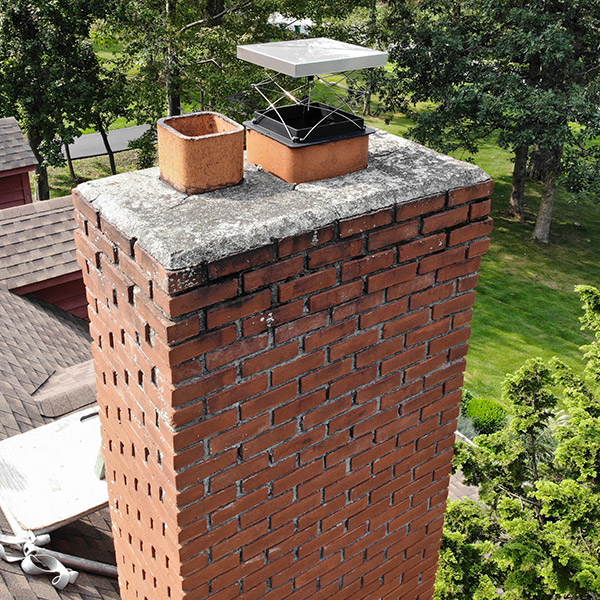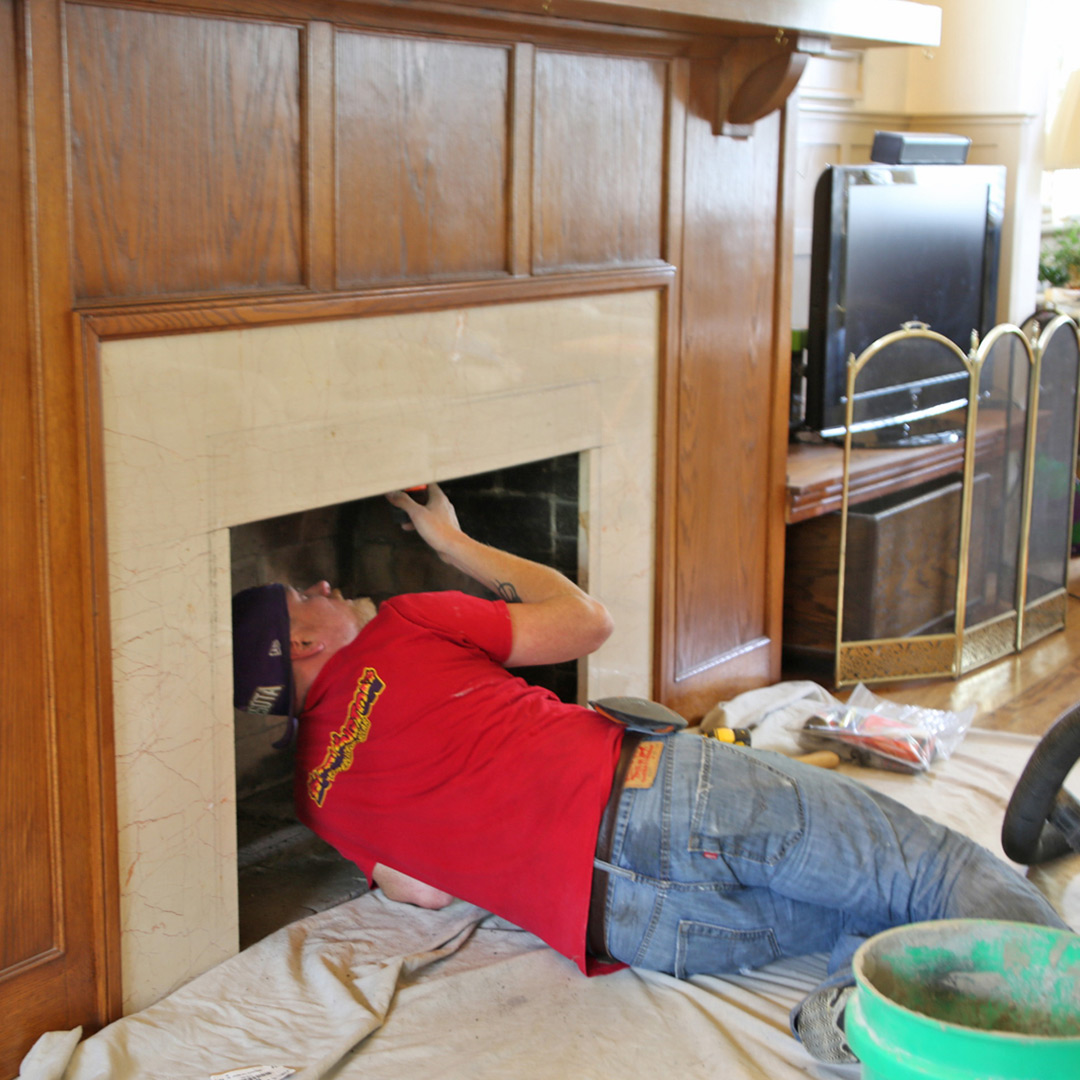Signs That Your Fireplace Damper Needs Repair
Dampers are an essential component of a fireplace, but you may not consider them, until they break and you can’t use your fireplace. So, how can you keep your damper from becoming a headache? We have the solution to the damper dilemma- signs that your fireplace damper needs repair. Read on.
 What Exactly is a Fireplace Damper?
What Exactly is a Fireplace Damper?
A fireplace damper is a critical component in the function and safety of a fireplace. It serves as a gatekeeper, regulating the flow of air and smoke between the fireplace and chimney. Located in the flue (the passageway inside your chimney), the damper can be opened to allow smoke and toxic gases to escape when a fire is burning and can be closed to prevent indoor heat loss when the fireplace isn’t in use. Proper use of a damper ensures efficient fires and keeps the indoor temperatures comfortable, as well as keeping out rain, debris, and wildlife when the fireplace isn’t in use.
Types of Fireplace Dampers
There are two types of fireplace dampers, each with a unique mechanism and placement inside the chimney and fireplace structure.
Throat Dampers
Throat dampers, positioned just above the firebox at the bottom of the chimney, are the most traditional type. They operate on a pivot mechanism, allowing them to open and close by a handle, lever, or chain. When taken care of, throat dampers can effectively control airflow but fail to seal perfectly.
Top-Sealing Dampers
Installed at the top of the chimney, top-sealing dampers provide a tight seal when shut, thanks to their design. They are operated by a cable or chain extending into the fireplace. Top-sealing dampers are known for their efficiency in preventing heat loss and protecting the chimney from outside elements when the fireplace is not in use.
Signs Your Damper Needs Repair
Now, to the reason you are reading this piece. Recognizing when a fireplace damper needs repair is crucial for your home’s safety, efficiency, and comfort. Here are some common signs that point to a damper needing repair.
Difficulty Opening or Closing
If the damper becomes hard to operate, sticking or refusing to fully open or close, it is most likely a sign of rust, corrosion, or structural issues.
Visible Damage
Cracks, warping, or other visible damage to the damper or its components can impede its function and may cause a malfunction.
Drafts or Cold Air
An undeniable sign that your damper is having issues is feeling drafts or cold air coming down the chimney when the damper is closed. This most likely means that the seal is ineffective, and the damper may need to be repaired or replaced.
Smoke Entering the Room
This sign is easy to notice. If smoke flows back into the room when a fire is burning, it probably means the damper is not fully open or there is a problem with the chimney’s draft. If you have this problem, it should be addressed immediately to prevent carbon monoxide from infiltrating your home.
Higher Heating Bills
Opening your heating bill and getting a shock at the cost is a sign that warm air is escaping through the chimney due to a faulty damper, necessitating a repair to ensure it shuts and you won’t go broke heating your home.
 In Conclusion
In Conclusion
The fireplace damper plays a pivotal role in the effectiveness and efficiency of a fireplace, impacting not just the comfort but also the safety of your home. Homeowners must understand the types of dampers and recognize the signs that indicate a need for repair. Regular inspections and maintenance by a professional can ensure that your fireplace damper is in good working condition, providing peace of mind and a cozy, warm home.
Let Mercer County Chimney Repair Your Damper
Don’t wait until your damper is stuck and becomes an emergency. If you reside in the greater Mercer County area, Hamilton, Lawrenceville, Chesterfield, and Allentown, trust a qualified and respected chimney sweep service to repair your damaged damper. We can be reached at 609-802-5288 or through our easy contact form on our website. A courteous and knowledgeable staff member will gladly schedule an appointment to inspect your fireplace, chimney, and damper.


